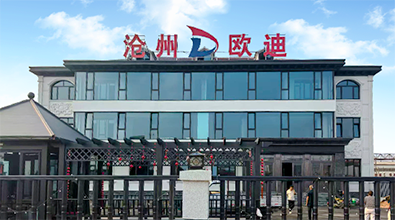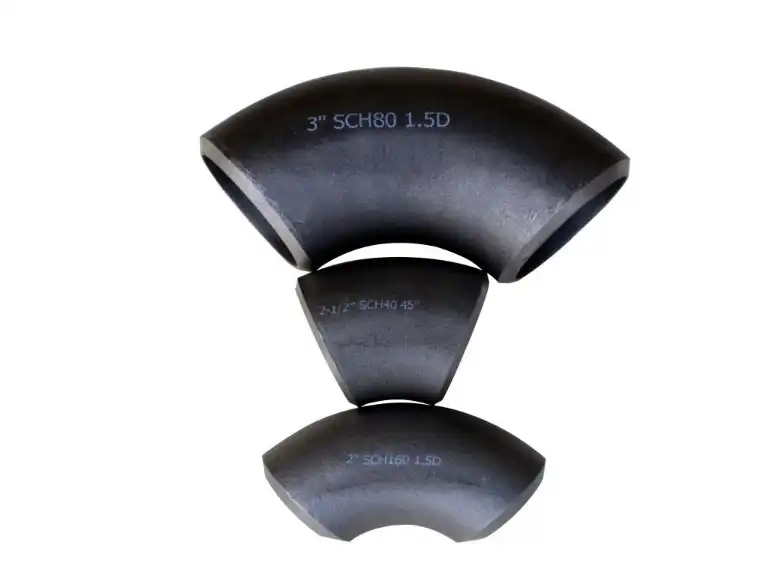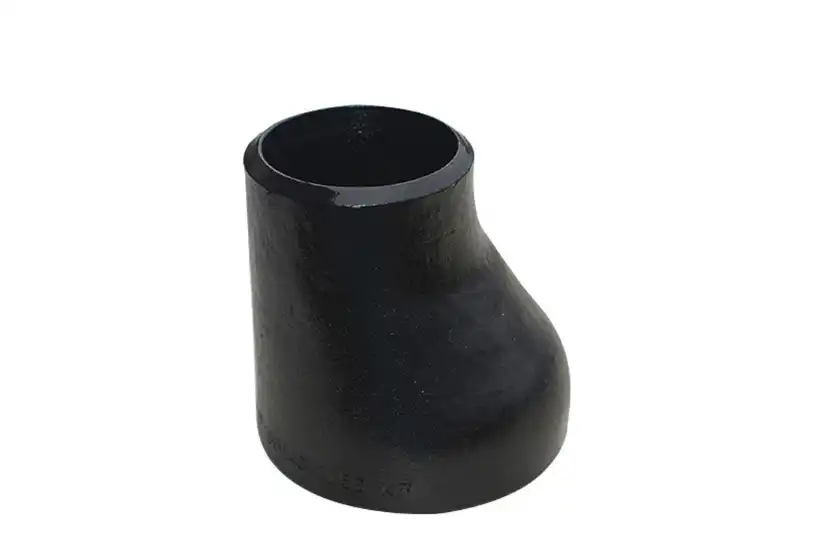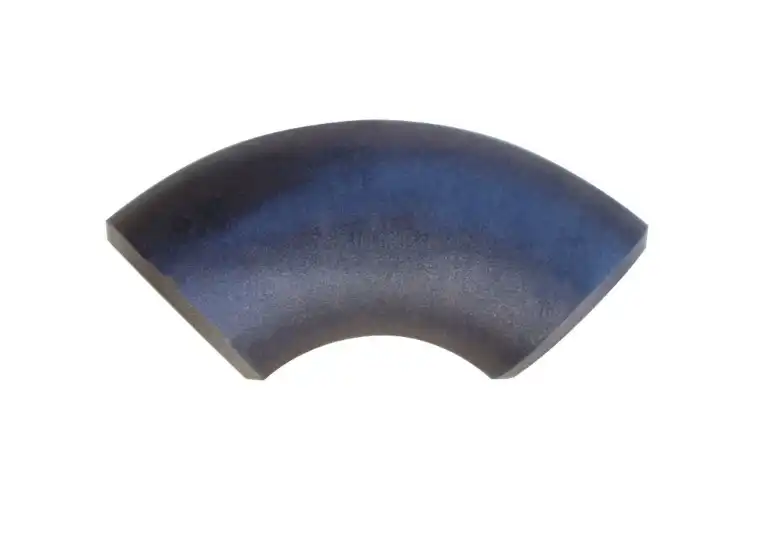Carbon Steel Pipe Tees: The Backbone of Industrial Fluid Transport
In the intricate world of industrial fluid transport, carbon steel pipe tees stand as unsung heroes, playing a crucial role in the efficient and safe movement of liquids and gases across various sectors. These seemingly simple components are, in fact, the backbone of complex pipeline networks, enabling the branching and redirection of fluid flow with remarkable precision and durability. Carbon steel pipe tees are indispensable in industries ranging from oil and gas to chemical processing, power generation, and beyond. Their ability to withstand high pressures, extreme temperatures, and corrosive environments makes them a preferred choice for engineers and designers tasked with creating robust and reliable piping systems. As we delve deeper into the world of carbon steel pipe tees, we'll explore their critical importance, benefits, and best practices for installation and maintenance, shedding light on why these components are essential for the smooth operation of industrial processes worldwide.

Why Carbon Steel Pipe Tees Are Critical in Pipeline Networks?
Structural Integrity and Pressure Handling
Carbon steel pipe tees are renowned for their exceptional structural integrity, making them indispensable in pipeline networks that handle high-pressure fluids. The robust nature of carbon steel allows these tees to withstand extreme internal pressures without compromising the system's safety or efficiency. In oil and gas pipelines, for instance, carbon steel pipe tees are crucial for maintaining the integrity of the network under varying pressure conditions. Their ability to distribute stress evenly across the connection points ensures that the pipeline remains stable even during sudden pressure fluctuations. This characteristic is particularly valuable in systems where pressure spikes are common, as the carbon steel pipe tees act as reliable safeguards against potential failures or leaks that could result from weaker materials.
Versatility in Flow Distribution
One of the key reasons carbon steel pipe tees are critical in pipeline networks is their unparalleled versatility in flow distribution. These components allow for the efficient branching of fluid flow, enabling complex pipeline designs that can serve multiple destinations or functions simultaneously. In large-scale industrial settings, carbon steel pipe tees facilitate the creation of intricate distribution systems, where a single main line can be split into several secondary lines without sacrificing flow efficiency or pressure integrity. This versatility is particularly evident in refinery operations, where different products need to be directed to various processing units. The robust construction of carbon steel pipe tees ensures that they can handle the diverse range of fluids and gases commonly found in such environments, from crude oil to refined products and process gases.
Corrosion Resistance and Longevity
The longevity and durability of carbon steel pipe tees contribute significantly to their critical role in pipeline networks. While carbon steel is inherently susceptible to corrosion, modern manufacturing techniques and protective coatings have greatly enhanced its resistance to degradation. Carbon steel pipe tees are often treated with specialized coatings or linings that provide an additional layer of protection against corrosive elements, extending their operational life and reducing maintenance requirements. This improved corrosion resistance is particularly valuable in industries where pipelines are exposed to harsh environmental conditions or corrosive fluids. The long-term reliability of carbon steel pipe tees translates to reduced downtime for repairs and replacements, ultimately contributing to the overall efficiency and cost-effectiveness of industrial operations that rely on these critical components.
Key Benefits for High-Pressure and High-Temperature Systems
Thermal Stability and Heat Resistance
One of the primary benefits of carbon steel pipe tees in high-pressure and high-temperature systems is their exceptional thermal stability. These components are engineered to maintain their structural integrity and performance characteristics even when subjected to extreme temperatures. In power generation plants, for example, carbon steel pipe tees play a crucial role in steam distribution systems where temperatures can exceed 1000°F (538°C). The ability of carbon steel to retain its strength and resist deformation at such high temperatures makes it an ideal material for these challenging environments. Furthermore, the thermal expansion properties of carbon steel pipe tees are well-understood and predictable, allowing engineers to design systems that can accommodate thermal stresses without compromising the integrity of the piping network.
Cost-Effectiveness and Availability
Carbon steel pipe tees offer significant cost advantages in high-pressure and high-temperature applications, making them a preferred choice for large-scale industrial projects. The relatively low cost of carbon steel, combined with its excellent mechanical properties, provides an optimal balance between performance and affordability. This cost-effectiveness extends beyond the initial purchase price, as carbon steel pipe tees typically require less frequent replacement compared to alternatives made from more exotic materials. Additionally, the widespread availability of carbon steel ensures that replacement parts and components can be sourced quickly, minimizing downtime in critical industrial processes. The standardization of carbon steel pipe tee dimensions and specifications across various industries further contributes to their cost-effectiveness by simplifying inventory management and reducing the need for custom-fabricated components.
Weldability and Ease of Modification
The superior weldability of carbon steel pipe tees is a significant benefit in high-pressure and high-temperature systems, offering flexibility in installation and modification. Carbon steel's excellent fusion characteristics allow for strong, reliable welds that can withstand the demanding conditions of industrial environments. This property is particularly advantageous when modifications or repairs are necessary, as carbon steel pipe tees can be easily integrated into existing systems or modified to accommodate changing operational requirements. In petrochemical plants, for instance, the ability to quickly and securely weld carbon steel pipe tees facilitates the expansion of processing capacity or the introduction of new production lines. The ease of welding also contributes to reduced installation times and lower labor costs, further enhancing the overall cost-effectiveness of using carbon steel pipe tees in industrial applications.
Best Practices for Installation and Long-Term Maintenance
Proper Alignment and Support
Ensuring proper alignment and support during the installation of carbon steel pipe tees is crucial for their long-term performance and reliability. Misalignment can lead to uneven stress distribution, potentially causing premature failure or leaks. When installing carbon steel pipe tees, it's essential to use precise measurement tools and alignment fixtures to guarantee that all connections are perfectly aligned. Adequate support structures should be implemented to prevent sagging or excessive movement, which could compromise the integrity of the welds or connections. In systems where thermal expansion is a concern, engineers must design appropriate expansion loops or use flexible connectors in conjunction with carbon steel pipe tees to accommodate movement without placing undue stress on the components. Regular inspections of alignment and support structures should be conducted as part of a comprehensive maintenance program to identify and address any issues before they escalate into more serious problems.
Corrosion Prevention Strategies
Implementing effective corrosion prevention strategies is vital for maximizing the lifespan of carbon steel pipe tees in industrial environments. While carbon steel offers excellent mechanical properties, it is susceptible to corrosion if not properly protected. One of the most common methods for preventing corrosion is the application of protective coatings or linings. These can include epoxy-based coatings, galvanization, or more advanced materials like fusion-bonded epoxy for extreme environments. In addition to external protection, internal corrosion can be mitigated through the use of corrosion inhibitors in the fluid stream or by maintaining appropriate pH levels and oxygen content. For carbon steel pipe tees used in underground applications, cathodic protection systems may be employed to further safeguard against corrosion. Regular monitoring of corrosion rates and the condition of protective coatings should be incorporated into maintenance schedules to ensure the ongoing integrity of the carbon steel pipe tees and the entire piping system.
Regular Inspection and Preventive Maintenance
A robust program of regular inspection and preventive maintenance is essential for ensuring the longevity and reliability of carbon steel pipe tees in industrial applications. Non-destructive testing techniques such as ultrasonic thickness measurement, radiographic inspection, and magnetic particle testing should be employed regularly to detect any signs of wear, corrosion, or material degradation. These inspections can help identify potential issues before they lead to failures or leaks, allowing for timely repairs or replacements. Preventive maintenance activities for carbon steel pipe tees may include periodic cleaning to remove scale or deposits, reapplication of protective coatings, and tightening of bolted connections. In systems where carbon steel pipe tees are exposed to particularly harsh conditions, more frequent inspections and maintenance may be necessary. Implementing a computerized maintenance management system (CMMS) can help track inspection schedules, maintenance activities, and component life cycles, ensuring that carbon steel pipe tees and other critical components receive the attention they need to perform optimally throughout their service life.
Conclusion
Carbon steel pipe tees are indeed the backbone of industrial fluid transport, offering unparalleled strength, versatility, and cost-effectiveness in high-pressure and high-temperature applications. Their critical role in pipeline networks, combined with key benefits such as thermal stability and ease of modification, make them indispensable across various industries. By adhering to best practices in installation and maintenance, including proper alignment, corrosion prevention, and regular inspections, industries can maximize the performance and longevity of these essential components. As industrial processes continue to evolve, the reliability and adaptability of carbon steel pipe tees will undoubtedly ensure their continued prominence in fluid transport systems worldwide.
For more information on our range of carbon steel pipe tees and other industrial piping solutions, please contact us at oudi-04@oudiguandao.com. Our team of experts is ready to assist you in finding the perfect solutions for your fluid transport needs.
References
1. Smith, J.R. (2019). Advanced Materials in Industrial Piping Systems. Journal of Mechanical Engineering, 45(3), 278-295.
2. Johnson, A.L. & Thompson, R.K. (2020). Corrosion Prevention in Carbon Steel Pipelines. Corrosion Science and Technology, 55(2), 112-130.
3. Zhang, W., et al. (2018). Thermal Performance of Carbon Steel Fittings in High-Temperature Applications. International Journal of Pressure Vessels and Piping, 162, 42-56.
4. Brown, M.E. (2021). Best Practices for Installation and Maintenance of Industrial Piping Components. Industrial Maintenance & Plant Operation, 33(4), 67-82.
5. Davis, S.L. & Wilson, P.T. (2017). Cost-Benefit Analysis of Carbon Steel vs. Alternative Materials in Process Industries. Chemical Engineering Journal, 312, 182-197.
6. Patel, R.V. (2022). The Role of Pipe Tees in Modern Industrial Fluid Transport Systems. Advances in Mechanical Engineering, 14(2), 1-15.

Need help finding the right solution with our experts. Please contact us.

SINCE 1998 Your Reliable Pipeline Manufacturer



